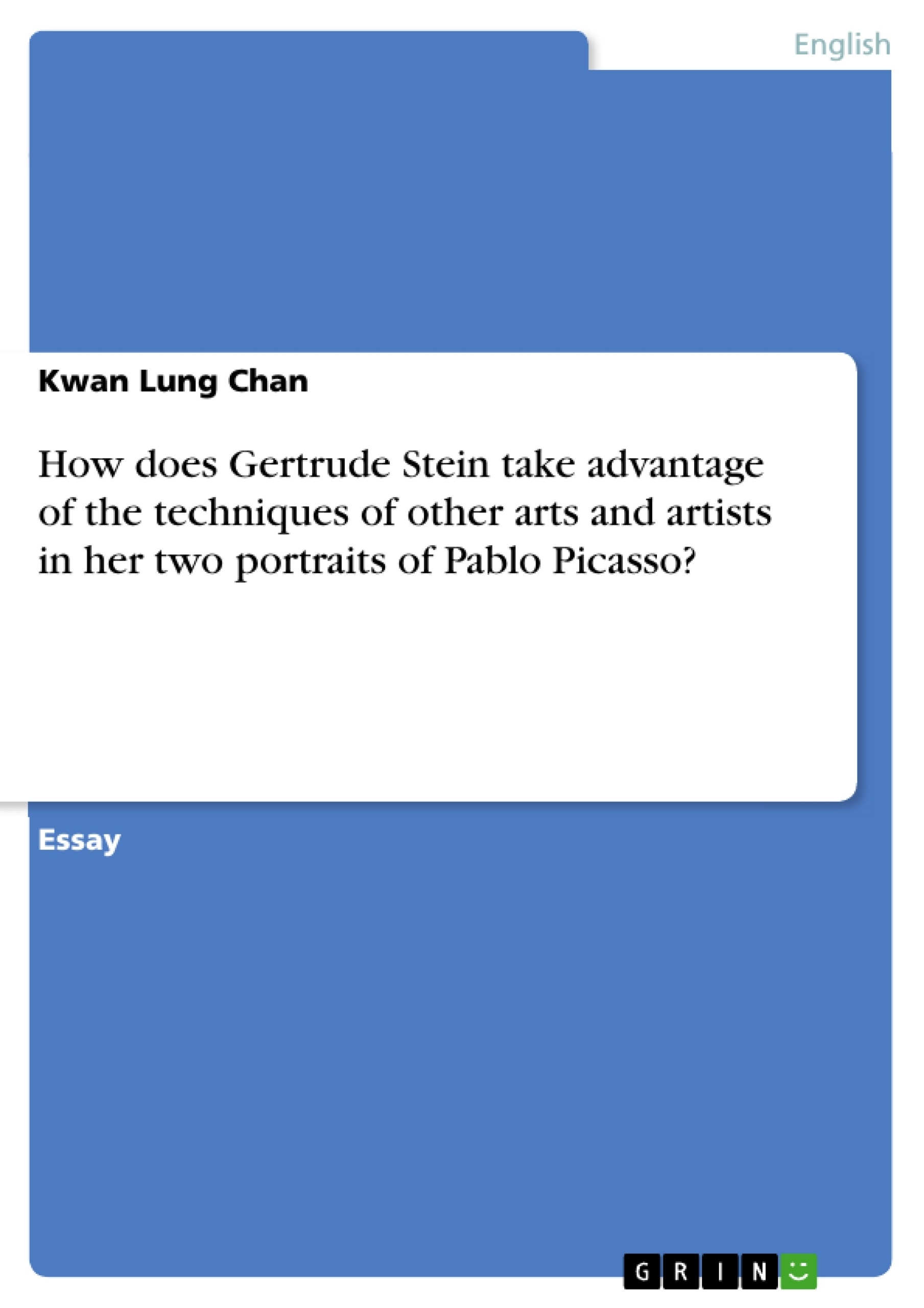Two of the most prominent poems Gertrude Stein has ever written on the subject of the famous Spanish painter Pablo Picasso were her "Picasso" (1909), written three years after Picasso painted a portrait of her in 1906, when she admired Picasso of his art, and "If I Told Him: a Completed Portrait of Picasso" (1923), when she started to doubt the worth of her literary works. Despite the stark difference of the poem’s background, both poems use literary techniques that resembles different forms of arts, including that of painting, film, dance and music.
Table of Contents
- Introduction
- Painting
- Film
- Dance
- Conclusion
Objectives and Key Themes
This essay examines Gertrude Stein's two poems about Pablo Picasso, "Picasso" (1909) and "If I Told Him: a Completed Portrait of Picasso" (1923), exploring how they draw on techniques from other art forms like painting, film, dance, and music.
- The relationship between Stein's poems and Picasso's artistic evolution, particularly his transitions through different artistic periods.
- The use of abstraction and repetition as literary techniques in Stein's poems, mirroring techniques found in painting, film, and dance.
- The role of grammatical ambiguity and repetition in creating unique reading experiences in Stein's poems.
- The concept of familiarity and repetition as a central aspect of both artistic expression and the reception of art.
Chapter Summaries
- Introduction: Introduces the two poems by Gertrude Stein on Pablo Picasso, "Picasso" (1909) and "If I Told Him: a Completed Portrait of Picasso" (1923), and outlines the essay's focus on the use of artistic techniques across different mediums in the poems.
- Painting: Analyzes the similarities between the poems and painting, specifically referencing Picasso's artistic periods and Stein's use of abstraction through the pronoun "one." The chapter also explores how the structure of the poems reflects the process of painting, including the addition and erasure of elements.
- Film: Examines the use of repetition in both Stein's poems and early 20th-century art films, specifically referencing "Ballet Mécanique" and its exploration of optical unconsciousness. The chapter argues that Stein uses repetition in a similar way to create grammatical unconsciousness in her poems.
- Dance: Discusses how the repetitive movements of dance are reflected in Stein's poems, referencing Yvonne Rainer's understanding of familiarity in dance and its application to the reading of Stein's works.
Keywords
The key focus areas of this essay are Gertrude Stein's poetry, Pablo Picasso's art, cross-artistic techniques, abstraction, repetition, grammatical unconsciousness, and the relationship between artistic expression and reception.
- Quote paper
- Kwan Lung Chan (Author), 2019, How does Gertrude Stein take advantage of the techniques of other arts and artists in her two portraits of Pablo Picasso?, Munich, GRIN Verlag, https://www.grin.com/document/906406



